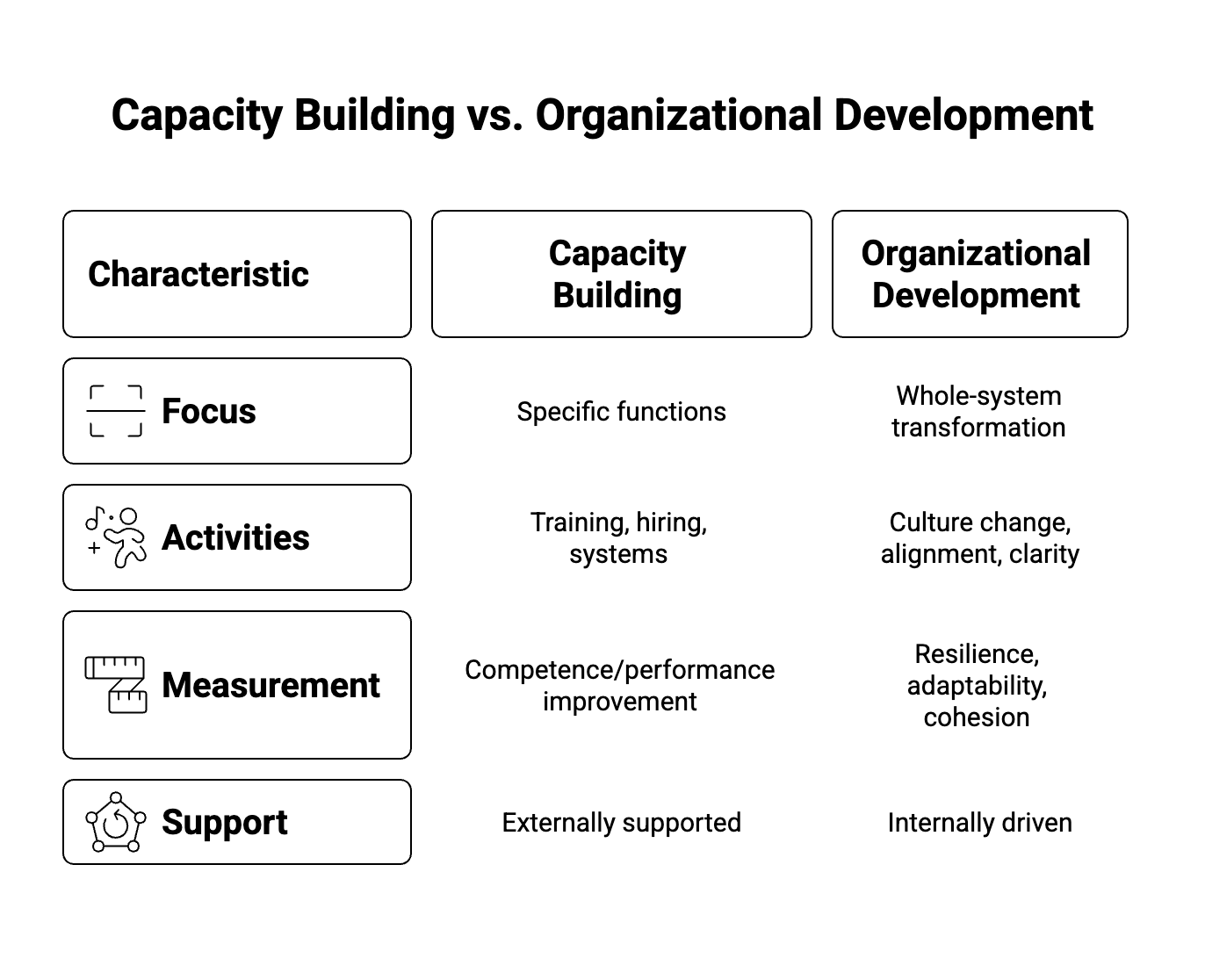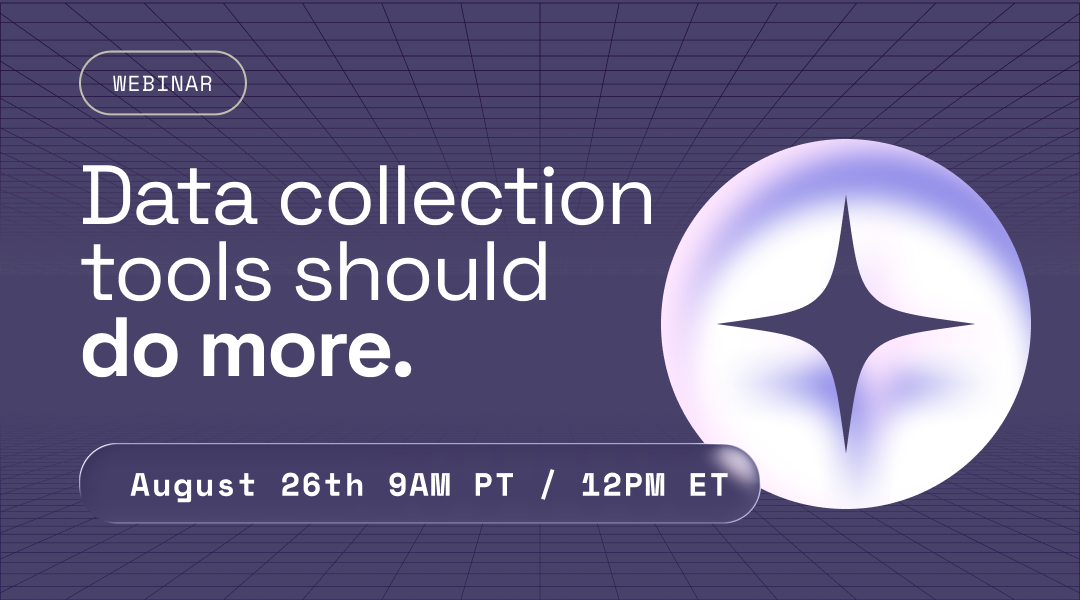Organizational Assessments Tools
That Lead to Action—Not Just Reflection
Most organizational assessments result in one thing: a report that gets archived.
But with the right approach, assessments can spark learning, realignment, and strategy shifts—across teams, programs, or partners.
Sopact helps you collect, analyze, and act on insights across your whole organization—not just one department or cycle.
✔️ Capture data from staff, stakeholders, partners, or grantees in real time
✔️ Analyze open-ended and quantitative inputs side by side
✔️ Turn findings into collaborative action plans and feedback loops
“Less than 35% of organizations say they use assessment results to make strategic changes—most cite disconnected systems and data fatigue.” — Bridgespan & GEO Survey 2023
What Is Organizational Assessment?
Organizational assessment is a systematic process of gathering insights about internal capacity, effectiveness, culture, and alignment.
It goes beyond surface metrics to reveal what's working—and what’s holding you back.
“Sopact allowed us to hear from every level—program staff, leadership, partners—and map strengths and gaps in one place.” – Sopact Team
⚙️ Why AI-Driven Organizational Assessment Is a Game Changer
Traditional assessments are siloed, static, and hard to act on.
By the time the data is analyzed, the moment has passed.
Sopact Sense makes the process dynamic and useful:
- Collect survey, interview, and narrative data from any stakeholder
- Analyze text responses instantly with NLP and document AI
- Segment feedback by department, region, or role
- Identify gaps, risks, and misalignments—without manual synthesis
- Collaborate with teams to clarify findings and co-design improvements
- Push results to Google Sheets, Looker Studio, or Power BI dashboards
From culture audits to DEI assessments to strategic planning—Sopact helps you close the loop faster.
What Types of Organizational Data Can You Analyze?
- Internal staff and leadership surveys
- Grantee or partner feedback
- DEI and belonging reflections
- Program alignment and performance rubrics
- Narrative reports and open-ended reflections
- Confidence and readiness assessments
What can you find and collaborate on?
- Map strengths and capacity gaps across the org
- Compare insights across time, teams, or initiatives
- Score responses by clarity, urgency, or alignment
- Spot blind spots in leadership vs. staff perception
- Build real-time dashboards for board or funder reporting
- Trigger follow-ups, clarification, or updates from contributors
Sopact makes your assessments continuous, inclusive, and action-ready—not a one-off report.
What is an Organizational Assessment?
An organizational assessment is the process of examining the internal workings of an organization—its systems, culture, and competencies—to understand whether it has the capacity to meet its goals. These assessments are critical at key inflection points:
- Before launching a strategic plan
- During a merger or leadership transition
- When seeking large-scale funding or entering new markets
- After underperformance or program stagnation
Unlike performance evaluations that focus on outcomes, organizational assessments focus on capabilities and infrastructure. Think of it as an internal audit for readiness and resilience.
Why Is Capacity Assessment at the Core of Organizational Assessment?
Capacity refers to the knowledge, systems, culture, and people required to consistently deliver impact. A capacity assessment helps identify whether your organization is doing the right things and doing things right.
Common areas reviewed include:
- Leadership and governance
- Financial health and sustainability
- Human resources and talent strategy
- Data and technology infrastructure
- Monitoring, evaluation, and learning (MEL)
- Program design and delivery
- Partnerships and stakeholder engagement
For many funders, capacity is the leading indicator of whether a grantee or partner can scale, adapt, or recover from disruptions.
What Are the Most Widely Used Capacity Assessment Tools?
There are several widely recognized capacity assessment tools. Here’s how they compare:

Most tools focus on structured surveys. But increasingly, organizations need more than checkboxes—they need stories, context, and document insights that traditional tools miss.
What Are the Signs You Need an Organizational Assessment?
Your team might need an assessment if you're experiencing any of these:
- Unclear strategic direction or stalled growth
- High staff turnover or morale issues
- Disconnected or duplicative systems
- Funding instability or under-performance on grants
- Trouble demonstrating impact to funders
- Poor collaboration across departments
These are symptoms of deeper capacity issues that a diagnostic assessment can uncover.
How Does the Assessment Process Work?
A standard organizational assessment follows these steps:
Define the Purpose
Is this assessment for internal improvement? Strategic planning? Fundraising? Clarifying this helps you choose the right tool and approach.
Select the Framework or Tool
Use tools like OCAT or Sopact Sense depending on your needs. If you want open-ended, qualitative insight (e.g., “why isn’t our staff adopting the new system?”), Sopact provides instant AI-powered analysis of survey text and documents.
Collect Data
This typically involves:
- Surveys to staff, board, or partners
- Interviews or focus groups
- Document review (budgets, strategy docs, program manuals)
With traditional tools, this process takes weeks and creates siloed results. Sopact Sense replaces manual reviews with automated analysis of PDF uploads and open-text responses, saving up to 80% of processing time (Source: Sopact Sense Concept, 2025).
Analyze and Visualize
Sopact Sense offers real-time dashboards, allowing you to:
- Spot missing or duplicated data
- Quantify open-text insights like “staff engagement” or “risk awareness”
- Merge feedback across intake, exit, and follow-up surveys
Debrief and Act
The goal is not just diagnosis, but prescription. What needs urgent attention? Where should capacity investments go? An effective assessment ends with action steps—clarifying priorities, budgets, and ownership.

Why Automating Organizational Assessments Is Critical for Growth
Organizational assessments are vital for understanding internal capacity, operational health, and alignment with strategic goals. Yet most nonprofits, accelerators, and CSR programs still rely on manual survey tools, focus group notes, and siloed documents. Whether it’s OCAT, CCAT, or a custom maturity model, the process is often clunky, inconsistent, and reactive.
Imagine trying to assess leadership alignment, strategic clarity, and culture across 5 departments using Google Forms and 15 interviews. You’d need to manually:
- Score surveys
- Analyze 3–5 open-ended text responses per person
- Review uploaded documents
- Reprocess everything if your strategy changes
Sopact Sense automates and centralizes this entire workflow. You can collect structured and unstructured data from individuals and teams, analyze qualitative responses with AI, and get instant dashboards that show trends, gaps, and strengths across your organization.
Whether you’re conducting a capacity assessment, theory of change validation, or readiness check for funding—Sopact Sense turns weeks of work into days.

From OCAT to AI-Enhanced Insights in Days, Not Weeks
Whether you're running a full OCAT/CCAT assessment, evaluating grant readiness, or tracking DEI progress across teams, Sopact Sense gives you:
- Centralized data collection (structured and unstructured)
- AI-powered analysis of open-ended text and uploaded documents
- Built-in scoring and maturity frameworks
- Immediate visibility through real-time dashboards
This saves 60–80% of time usually spent in back-and-forth emails, survey cleaning, and manual analysis—while making sure your data is actionable and auditable.
Let me know if you'd like to adapt this for OCAT vs CCAT comparisons, or a specific nonprofit capacity maturity model.
Real-World Example: Workforce Development Evaluation
Let’s say you’re running a youth tech-skilling program. With Sopact Sense, you can:
- Register students using a Contact object
- Collect midline and postline survey data with built-in skip logic
- Link each student’s data across time with unique IDs
- Analyze essay questions like “Why do you feel more confident now?” alongside metrics like job placement
This gives you both the what and the why—the ultimate combination for capacity assessment.
When to Use a Consultant vs. a Platform
Traditional assessments often require external facilitators or consultants. That’s valuable when:
- You need an objective third-party evaluation
- Internal capacity to analyze is limited
- You want strategic guidance on action plans
Platforms like Sopact Sense are ideal when:
- You already have data collection underway
- You need quick turnaround or frequent re-assessments
- You want to include rich qualitative insights at scale
In fact, many Sopact clients report replacing weeks of consultant-led analysis with real-time AI insights.
What Would a User Ask Next After Searching “Organizational Assessment”?
- What is the best capacity assessment tool for nonprofits?
- How do I assess organizational culture?
- Can AI help with organizational assessments?
- What’s the difference between capacity building and organizational development?
- How do I choose between OCAT, CCAT, and Sopact Sense?
Conclusion: Make Assessments Actionable
Organizational assessments shouldn’t sit in a drawer. When done right, they trigger powerful change. But that requires data that’s not only accurate but alive—able to be explored, corrected, and continuously enriched.
Sopact Sense was built precisely for this moment: a lightweight, AI-native platform that allows you to assess, adapt, and act faster than ever before.
If your organization is ready to stop fixing spreadsheets and start fixing systems, it’s time to reimagine capacity assessment—not as a one-time survey, but as a continuous, collaborative process.
What is the best capacity assessment tool for nonprofits?
There is no one-size-fits-all answer—but the best tool depends on your organization's goals, context, and desired depth of analysis. Here's a quick guide:
- McKinsey’s OCAT is widely used for strategic planning and benchmarking. It evaluates leadership, strategy, and systems but is best for stable organizations with the time to digest a full report.
- TCC Group’s CCAT excels at assessing leadership, adaptability, and organizational culture. It’s best for nonprofits undergoing change or leadership transitions.
- Sopact Sense is the best option for nonprofits collecting mixed-format data (surveys, PDFs, open text). It uses AI to synthesize qualitative and quantitative insights in real-time and supports continuous assessment over one-time surveys.
🟢 For nonprofits with limited staff and evolving needs, Sopact Sense offers the most flexible, low-friction option with powerful analytics and built-in feedback loops.
How do I assess organizational culture?
Assessing organizational culture involves exploring the values, behaviors, and practices that guide how people work and collaborate. Use a combination of:
- Surveys: Ask staff and stakeholders how they perceive leadership, safety, inclusion, communication, and alignment with values.
- Interviews & Focus Groups: Capture deeper qualitative insights on what’s said—and what isn’t.
- Document Reviews: Examine policies, emails, onboarding materials, and meeting notes for patterns.
- Sopact Sense advantage: You can combine narrative responses, open-ended feedback, and document uploads—all analyzed with AI for themes like trust, innovation, or burnout—giving a truer picture than surveys alone.
AI-driven analysis helps identify misalignment between stated values and lived experiences—crucial for funder reports and DEI audits.
Can AI help with organizational assessments?
Yes—and it's transforming the field. Traditional assessments rely on static surveys, interviews, and weeks of manual analysis. AI tools now:
- Summarize qualitative feedback (e.g., staff comments or grantee reports)
- Score open-ended text against rubrics (e.g., leadership strength, program risk)
- Flag data gaps or inconsistencies in real-time
- Detect sentiment and themes across hundreds of survey responses or PDF attachments
🚀 Tools like Sopact Sense go beyond automation. They maintain clean relationships between people, surveys, and documents, so you can:
- Automatically follow up with the same stakeholder (via unique links)
- See “who said what” behind every data point
- Instantly revise scoring criteria without redoing analysis
AI doesn’t replace judgment—it amplifies human insight by saving time and surfacing hidden patterns.
What’s the difference between capacity building and organizational development?
Though often used interchangeably, there’s a meaningful distinction:

🧠 An organizational assessment is your diagnostic tool. It tells you what needs capacity building and when to pursue deeper development efforts.
How do I choose between OCAT, CCAT, and Sopact Sense?
Here’s a decision matrix to help you choose the right tool:

✅ Choose OCAT if you want a one-time benchmark across a large cohort.
✅ Choose CCAT if you need to assess leadership and board dynamics.
✅ Choose Sopact Sense if you're collecting data from multiple stakeholders over time, using surveys, narratives, and documents—and need AI to synthesize it all.









